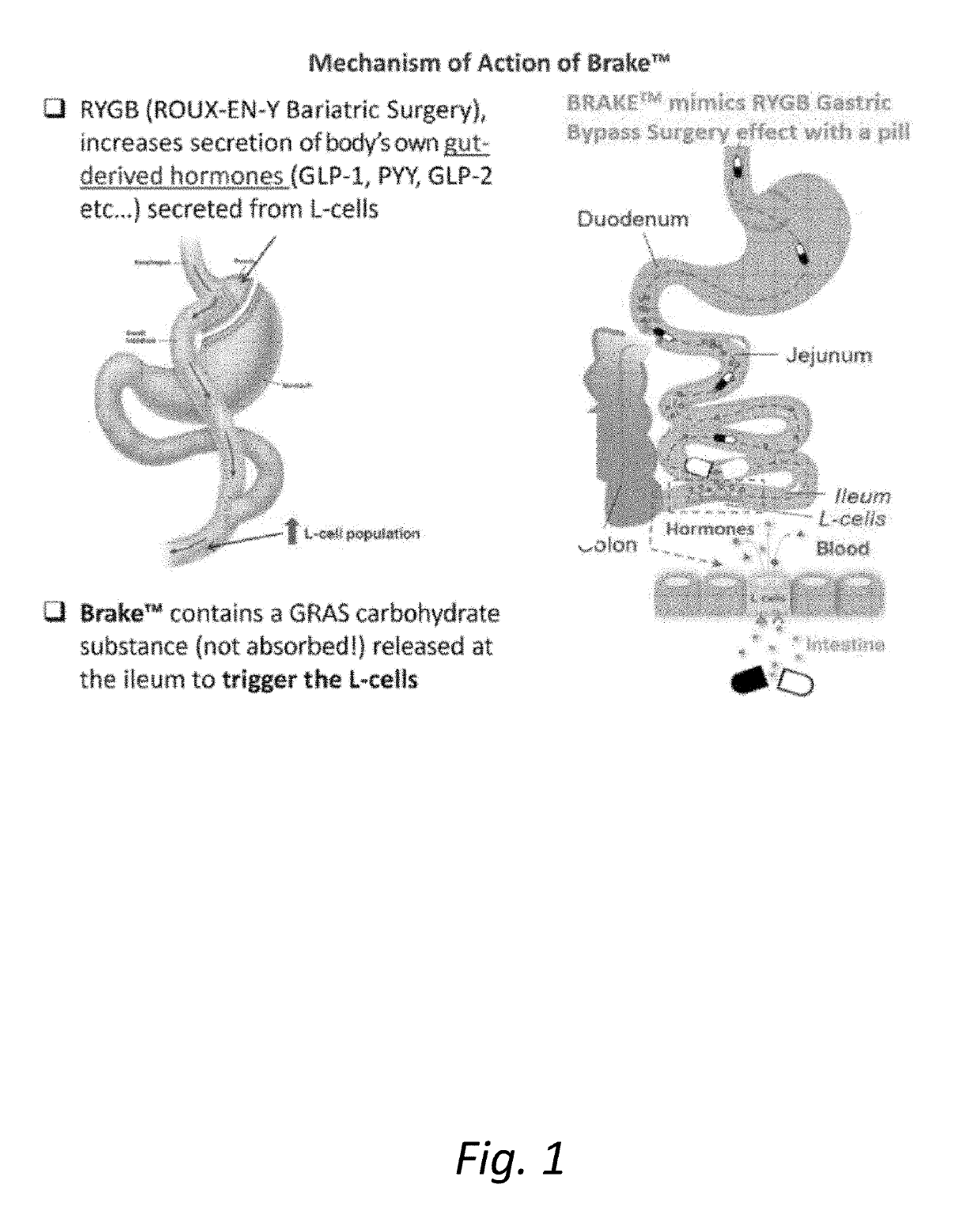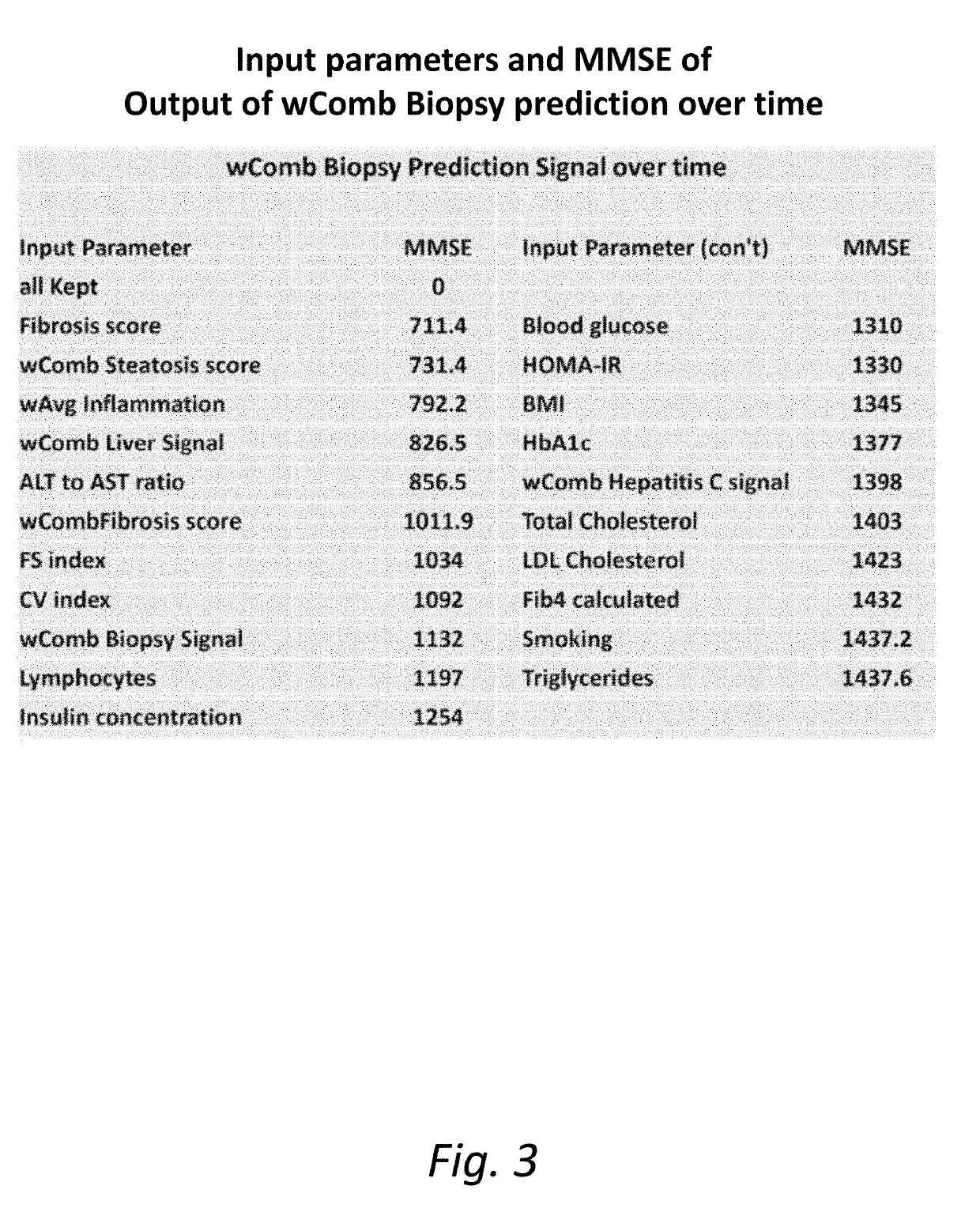Diagnostics and methods for treatment of non-alcoholic hepatic steatosis and hepatic steatohepatitis, and prevention of complications thereof
a technology for hepatic steatosis and non-alcoholic patients, applied in the direction of drug compositions, biological material analysis, plant/algae/fungi/lichens ingredients, etc., can solve the problems of increasing the complexity of nash cases, increasing the risk of hepatocellular carcinoma in patients, etc., and achieve the effect of increasing the risk of hepatocellular carcinoma
- Summary
- Abstract
- Description
- Claims
- Application Information
AI Technical Summary
Benefits of technology
Problems solved by technology
Method used
Image
Examples
example 1
e Mathematical Modeling for Outcomes in NASH and NAFLD Patients
[0274]It remains difficult to predict the status of the liver using single biomarkers, and this often necessitates a biopsy or a scanning method for both diagnosis and monitoring of treatment response. We have been developing multi-parameter models of Metabolic Syndrome (MetS) driven diseases such as Insulin Resistance, T2D and obesity. The application to NASH and NAFLD was a logical extension of these methods, and the goal was to predict the biopsy results and also to define improvement and define optimal time for a repeat biopsy. To quantify these changes, we developed the FS (Fayad-Schentag) index to quantify the progression of MetS and to characterize its remission after RYGB surgery. RYGB surgery remediates insulin resistance and abdominal obesity, and what follows is a concomitant improvement in the lab biomarkers of T2D, NAFLD and NASH. Brake™ is an oral mimetic of the RYGB effect on the ileal brake, as it release...
example 2
parison Between FS Index and CV Index
[0343]Here we compare the same patients using FS index and CV index, in order to establish concordance in the risk scoring. We also include patients with MIs as examples of patients with CV events. For each of these patients, the FS index was calculated and the CV index was calculated, using an electronic spreadsheet designed for this purpose, and with the goal to evaluate concordance in the risk scoring. We also include patients with MIs as examples of patients with CV events.
[0344]Primary objectives of this analysis included the comparison of both indices of CV risk with each other in patients treated with RYGB, Brake or Atorvastatin, each added to SoC which had not changed the index prior to adding our treatment interventions. This analysis showed pronounced effects of RYGB and Brake, but not atorvastatin on FS index, verifying the impact of RYGB and Brake on all aspects of metabolic syndrome.
[0345]Patients used for this comparison are describ...
example 3
Comparison—RYGB-Brake-SOC Lipitor
[0353]Thirty-four patients received Brake™ plus SOC within the cohort, 17 patients had a RYGB procedure with SOC and 29 patients were taking Lipitor (atorvastatin) plus additional medications considered SOC for patients with multiple manifestations of MetS. FIG. 20. The mean age in the Brake™ plus SOC group was 50±11 years with a mean BMI of 34±5.8 and the majority of subjects were female (68%). No significant differences were noted in age or gender between groups, however the RYGB groups had a higher baseline BMI as compared to Brake™ and atorvastatin (P<0.0001). Except for this large difference in baseline weight in RYGB patients, baseline metabolic characteristics were similar between case cohorts. Subjects treated with atorvastatin plus SOC had a higher percentage of patients with a baseline total cholesterol above 200 mg / dL (P<0.0001). There were no other significant differences in baseline lipid indices. The RYGB plus SOC group had the highest ...
PUM
 Login to View More
Login to View More Abstract
Description
Claims
Application Information
 Login to View More
Login to View More - R&D
- Intellectual Property
- Life Sciences
- Materials
- Tech Scout
- Unparalleled Data Quality
- Higher Quality Content
- 60% Fewer Hallucinations
Browse by: Latest US Patents, China's latest patents, Technical Efficacy Thesaurus, Application Domain, Technology Topic, Popular Technical Reports.
© 2025 PatSnap. All rights reserved.Legal|Privacy policy|Modern Slavery Act Transparency Statement|Sitemap|About US| Contact US: help@patsnap.com



